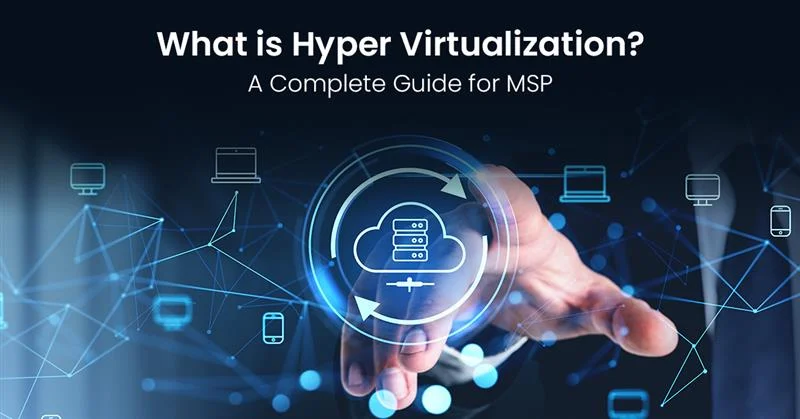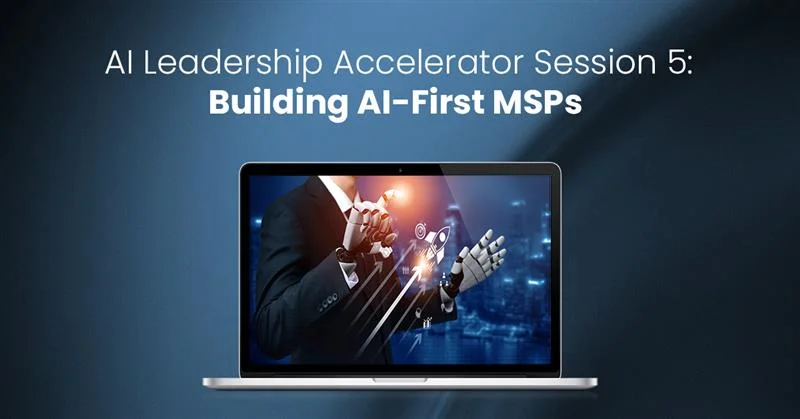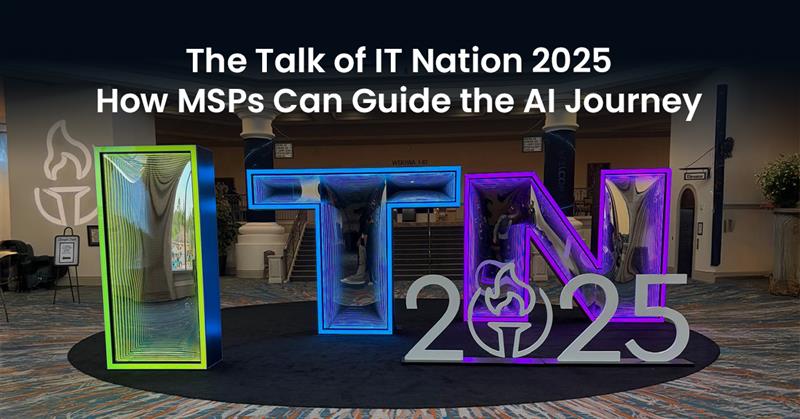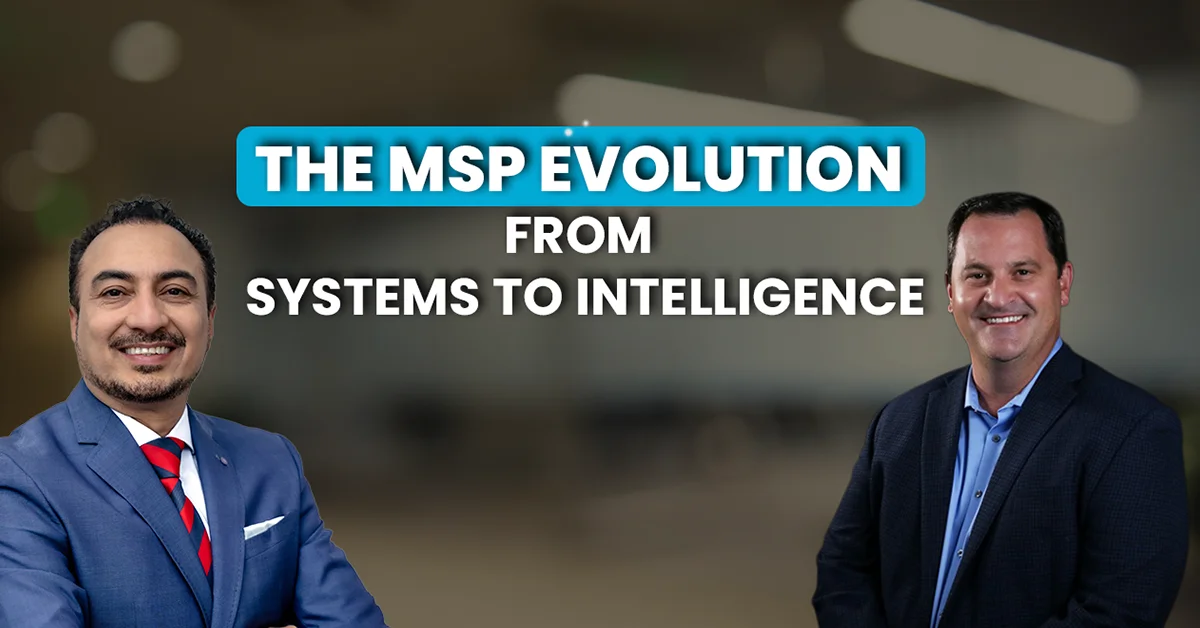Cyber threats are exploding. Q3 2024 saw organizations facing an average of 1,876 cyber-attacks per week, marking a staggering 75% increase from the previous year, as per Checkpoint Report. For MSPs managing multiple clients, this isn’t just a statistic; it’s a wake-up call. Your clients depend on you to catch threats before they turn into breaches, and traditional security tools can’t keep up.
That’s where what is SIEM comes in our mind. Security Information and Event Management has evolved from a nice-to-have to an absolute necessity in modern cybersecurity operations. Let’s break down everything you need to know about SIEM and why it’s becoming the backbone of effective managed SOC service for MSP.
What is SIEM? Understanding Security Information and Event Management
SIEM security has become the cornerstone of modern cybersecurity operations, but many MSPs still struggle to understand its full potential. Let’s dive into what makes SIEM technology essential for protecting your clients.
At its core, SIEM is a comprehensive security solution that combines Security Event Management (SEM) and Security Information Management (SIM) into one powerful platform. Think of it as the central nervous system of your security infrastructure, constantly monitoring, analyzing, and alerting you to potential threats.
Here’s what makes SIEM tick:
- Log collectors that gather data from every corner of your network (firewalls, servers, endpoints, applications)
- Correlation engines that connect the dots between seemingly unrelated events
- Real-time dashboards providing visibility into your entire security posture
- Alerting systems that notify your team when something suspicious happens
- Analytics tools that help identify patterns and anomalies
The beauty of SIEM lies in its ability to centralize all this information. Instead of jumping between ten different tools to piece together what’s happening in your environment, SIEM brings everything to one place. This matters because modern cyber-attacks rarely announce themselves with a single obvious event. They’re subtle, distributed, and designed to evade detection.
How Does SIEM Monitoring Work for Threat Detection?
Understanding how SIEM monitoring operates is crucial for MSPs looking to implement effective threat detection and response capabilities. Here’s the technical breakdown of SIEM’s core functionality.
Log Management and Data Collection
SIEM monitoring starts with log management; the foundation of everything else. Every device, application, and user in your network generates logs. We’re talking about millions of events per day. Enterprises generate terabytes of logs each day from endpoints, cloud services, and operational technology.
SIEM platforms collect all these logs through agents or agentless methods from network devices, security appliances, servers, applications, and cloud services. Once collected, SIEM normalizes this data because different systems log information in different formats. Your firewall logs don’t look like your Active Directory logs. Normalization translates everything into a common format so the correlation engine can work with it.
Advanced Threat Detection with Automation
Here’s where SIEM automation becomes your secret weapon. The system applies correlation rules to identify patterns that indicate malicious activity. For example, a single failed login isn’t alarming. But 50 failed logins from the same IP address within five minutes? That’s a brute force attack in progress.
SIEM automation handles pattern recognition across multiple data sources, behavioral analysis to spot anomalies, automated incident creation for critical events, and machine learning that improves detection over time. This automation is what makes the difference between catching an attacker in the reconnaissance phase versus discovering them after they’ve exfiltrated your client’s customer database.
Key Benefits of SIEM for MSP Security Operations
SIEM technology delivers measurable value across multiple dimensions of your security operations. From automation to compliance, here’s why MSPs are making SIEM a core component of their service offerings.
1: Enhanced Incident Management
Incident management automation transforms how your team responds to threats. When SIEM platforms detect a threat, automation kicks in, alerts are automatically prioritized based on severity and business impact, related events are grouped into single incidents to reduce alert fatigue, playbooks trigger automated response actions, and tickets are created and assigned to the right team members.
The result? Your mean time to detect (MTTD) and mean time to respond (MTTR) plummet. Organizations using these automated solutions see dramatic improvements in response times and cost savings.
2: Compliance Made Manageable
Whether your clients operate in healthcare (HIPAA), finance (PCI-DSS), or any regulated industry (GDPR, SOX), SIEM makes compliance management manageable. SIEM platforms provide automated log retention based on regulatory requirements, pre-built compliance reports for major frameworks, audit trail documentation that survives scrutiny, real-time monitoring of compliance-critical systems, and automated evidence collection for audits.
3: Managed Detection and Response Integration
When you’re providing security services to multiple clients, SIEM gives you the visibility and control you need across all environments. The integration between SIEM and managed detection and response provides centralized monitoring across multiple client environments, consistent security policies and correlation rules, shared threat intelligence that benefits all clients, proactive threat hunting capabilities, and detailed forensic analysis when incidents occur.
Critical SIEM Use Cases for Modern Security
SIEM cyber security shines brightest when applied to real-world threat scenarios. Let’s explore the most impactful use cases where SIEM monitoring makes the difference between prevention and disaster.
Real-Time Threat Detection
SIEM excels at catching threats in real-time before they cause damage.
Consider these scenarios: brute force attacks with multiple failed login attempts followed by a successful login from an unusual location, insider threats where users suddenly access files they’ve never touched outside business hours, malware infections showing unusual network traffic patterns indicating command and control communications, and data exfiltration with large file transfers to external locations that deviate from normal behavior.
The magic happens when SIEM correlates events across multiple sources. A user logs in successfully (not suspicious). That same user accesses the file server (still normal). But when SIEM sees that login happened from China at 3 AM while the user’s laptop is connected to the corporate network in New York, now you’ve got an incident.
Cloud Security and Hybrid Environment Monitoring
Modern businesses operate in hybrid environments with on-premises infrastructure, multiple cloud platforms, and SaaS applications. Traditional security tools struggle with this complexity, but SIEM excels here by collecting logs from AWS CloudTrail, Azure Activity Logs, and Google Cloud Audit Logs, monitoring user access across hybrid environments, detecting misconfigurations that create security gaps, tracking data movement between on-premises and cloud systems, and ensuring consistent security policies across all platforms.
Overcoming SIEM Implementation Challenges
Even with clear benefits, SIEM deployment presents real obstacles that MSPs must navigate carefully. Recognizing these challenges upfront helps you plan for successful implementation and ongoing management.
Let’s be honest: implementing SIEM isn’t always smooth sailing. Organizations face several challenges including data overload, false positives from out-of-the-box configurations, skills gaps (requiring dedicated staff remains a top challenge), integration complexity with existing security tools, and cost management with SIEM licensing based on data volume.
Managing SIEM effectively requires continuous tuning of correlation rules to reduce false positives while maintaining detection accuracy, regular updates to threat intelligence feeds, log retention optimization balancing compliance requirements with storage costs, performance monitoring to ensure the system scales with growing log volumes, and team training so analysts can actually use the platform effectively.
Why Most MSPs Struggle with SIEM
The gap between SIEM’s promise and reality often comes down to resources and expertise. Here’s why implementation challenges persist even for experienced MSPs.
Understanding SIEM technology and implementing it are two completely different challenges. The average organization takes 258 days to identify and contain a breach. Without proper SIEM implementation and expert monitoring, that number climbs even higher.
Here’s what most MSPs struggle with:
- Staffing Nightmare: Finding cybersecurity professionals is tough. Training them to use SIEM effectively? Even tougher. The global shortage of skilled professionals means you’re competing for limited talent.
- Alert Overload: Your SIEM generates thousands of alerts daily. Without proper tuning and expert analysis, you’re drowning in false positives while real threats slip through.
- Integration Headaches: Connecting SIEM with your existing security tools and client environments requires specialized knowledge and significant time investment.
- Budget Constraints: SIEM licensing, infrastructure, storage, and skilled personnel add up quickly. Many MSPs find the ROI difficult to justify internally.
- Expertise Deficit: SIEM requires understanding correlation rules, threat intelligence, incident response procedures, and log management best practices. That’s a tall order for small teams.
Transform Your Security Operations with Expert SIEM Management
Your clients face sophisticated cyber threats daily, and they’re counting on you to deliver enterprise-grade protection. The difference between effective SIEM security and shelf-ware comes down to expert 24/7 monitoring, proper tuning, and seamless integration with your existing MSP security tools.
Here’s the reality: while you’re struggling to hire and train SIEM analysts, attackers are actively targeting your clients. They need proactive managed detection and response, not reactive incident cleanup. Professional SIEM services transform overwhelming data into actionable intelligence, catch threats automated tools miss, and provide the 24/7 SOC monitoring your clients deserve; letting you focus on growing your MSP business.
Don’t wait for the next breach. Every hour without proper SIEM monitoring is an opportunity for attackers. The average organization takes 258 days to identify and contain a breach; without expert SIEM implementation, that number climbs even higher.
Schedule a call with us today and discover where your current security posture has gaps and how professional SIEM services can transform your threat detection and incident response.
Get a clear roadmap for delivering enterprise-grade security without building an expert team from scratch.
Frequently Asked Questions About SIEM
Q1: What is SIEM and why is it important for cybersecurity?
A: SIEM is a solution that aggregates security data from across your IT infrastructure, analyzes it in real-time, and alerts you to potential threats. It’s essential because it provides visibility that individual security tools cannot achieve and enables rapid threat detection and response.
Q2: How does SIEM work in detecting security threats?
A: SIEM collects events from all network sources, applies correlation rules to identify patterns indicating threats, creates incidents from critical events, and sends notifications to security teams for immediate response.
Q3: What are the common challenges in implementing SIEM?
A: Key challenges include managing large volumes of log data, reducing false positive alerts through proper tuning, ensuring integration with diverse log sources, maintaining sufficient skilled personnel, and keeping system performance optimal as data grows.
Q4: Do I need dedicated staff to monitor SIEM 24/7?
A: Yes, effective SIEM requires continuous monitoring for maximum effectiveness, which many MSPs achieve through partnerships with managed security services providers offering 24/7 SOC monitoring capabilities.
Q5: How can SIEM help with compliance requirements?
A: SIEM automates log collection and retention per regulatory standards, provides real-time monitoring of data access and changes, includes built-in reporting for major compliance frameworks, and maintains audit trail documentation.








